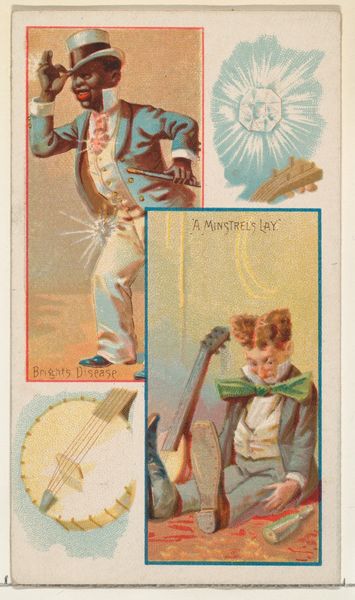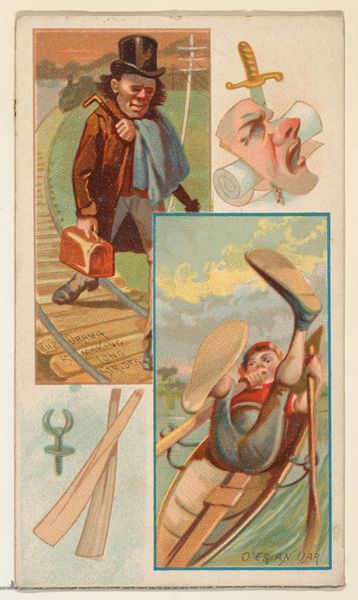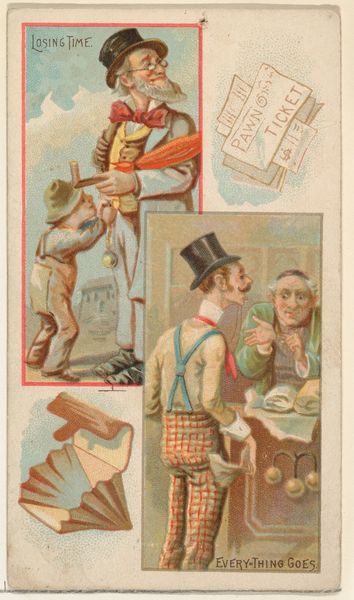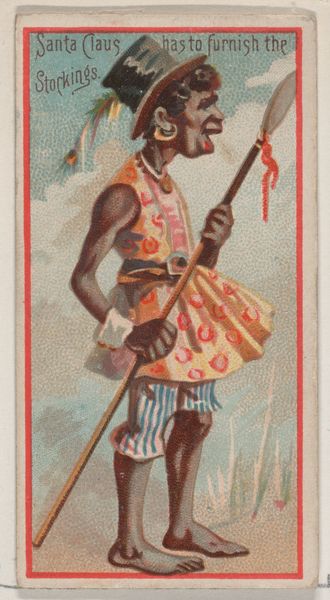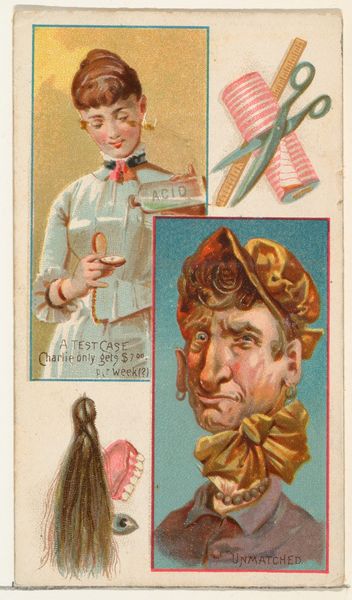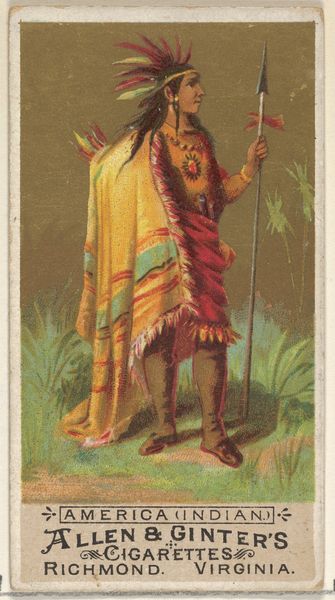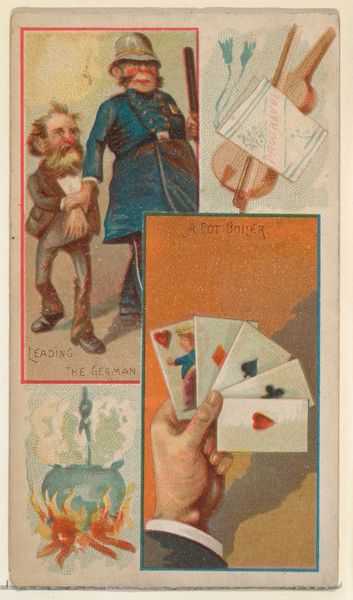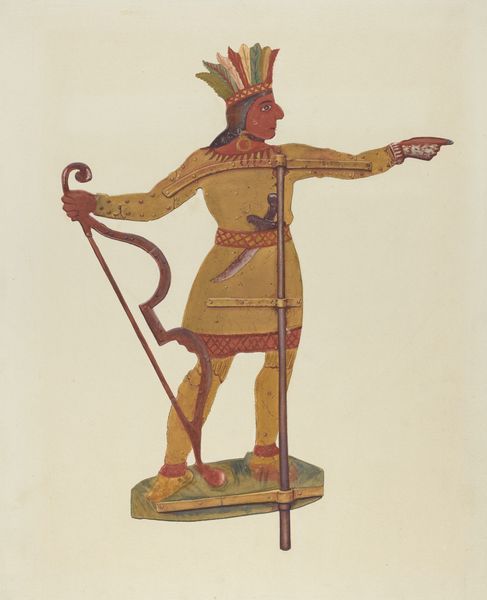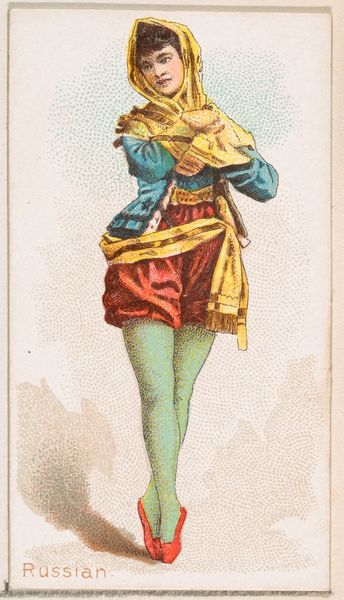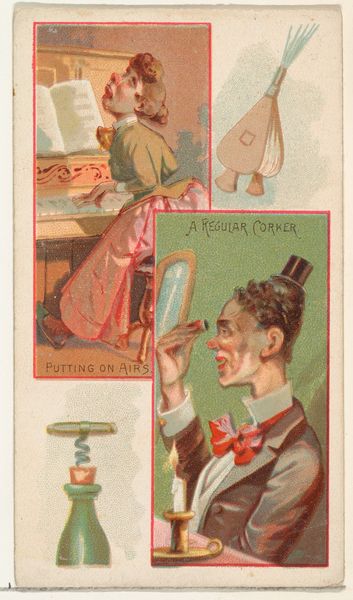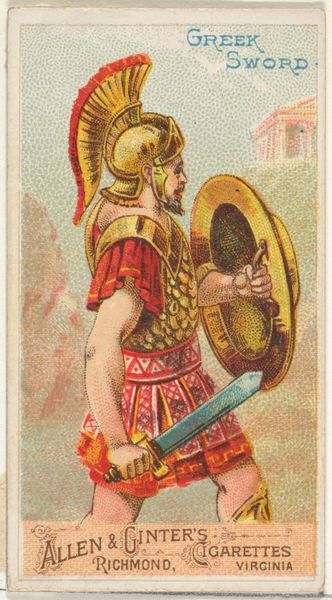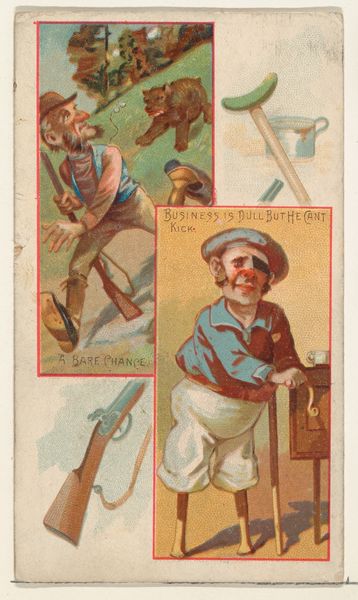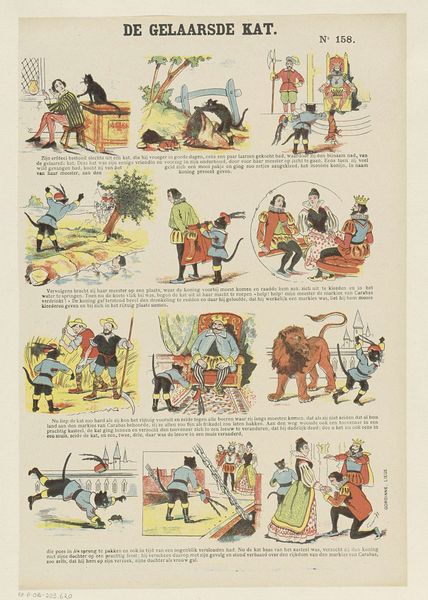
Caricatured figures / Santa Claus has to Furnish the Stockings / Organic Revolution, from the Jokes series (N118) issued by Duke Sons & Co. to promote Honest Long Cut Tobacco 1890 - 1893
Dimensions: Sheet: 4 1/4 × 2 7/16 in. (10.8 × 6.2 cm)
Copyright: Public Domain
Editor: This lithograph from around 1890 by W. Duke, Sons & Co., titled "Caricatured figures / Santa Claus has to Furnish the Stockings / Organic Revolution," has quite a provocative and layered presentation, even for advertising. The caricature in the top left looks… unusual. How do you interpret this work's visual vocabulary? Curator: The caricatures here, while unsettling to our modern eyes, draw on a complex history of symbols. The figure labelled "Santa Claus" utilizes a minstrel trope, popular at the time, superimposing it onto a figure of gift-giving and abundance. The jarring effect is intentional, forcing the viewer to reconcile conflicting cultural meanings. How does that specific superimposition strike you? Editor: It’s… deeply uncomfortable. But it also feels deliberate, meant to shock, or at least grab attention in a society accustomed to such images. So it is using familiarity, even racist familiarity, to get a double take. What does the rest of the piece then suggest to you? Curator: Indeed. The “Organic Revolution” section, depicting a figure grinding something in a box, might symbolize a new social or industrial order. Perhaps, then, the figure labelled Santa represents a challenged, outdated structure and sensibility being confronted. How do the pink stockings factor into this interpretation for you? Editor: I see how they are subtly related: like the man with the box, stockings represent production. Maybe, then, all of this relates to anxieties about labour and social changes at the time? Curator: Precisely. We see the convergence of cultural anxieties represented through layered visual cues in even the most commercial art forms. We have to confront these historic racist caricatures to grasp cultural history. What do you think you will carry forward in how you look at art after looking closely at this image? Editor: I will certainly examine images within their contemporary societal framework and symbols with more scrutiny in context, acknowledging their complex origins and intended effect.
Comments
No comments
Be the first to comment and join the conversation on the ultimate creative platform.
